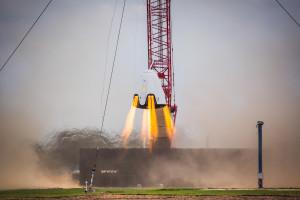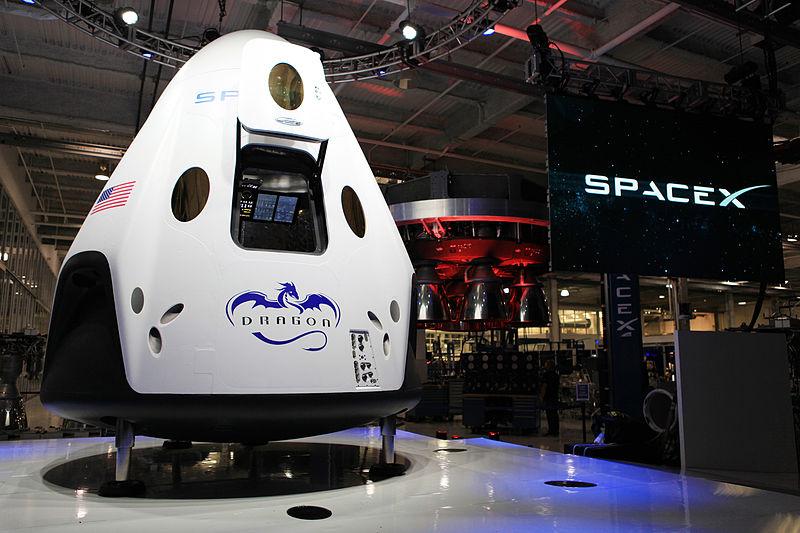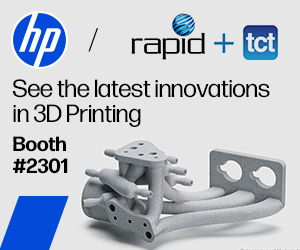The Dragon Can Hover: SpaceX and Their 3D Printed SuperDraco Thrusters Take the Next Step Towards Propulsive Landing
 It takes a lot of work to launch something into space, but it takes just as much, if not more, work to bring it back down to the ground again. SpaceX has been working on new ways to do both. We’ve been following the spacecraft manufacturing company for quite a while now, as their Dragon space capsule has soared to the International Space Station and back several times. Eventually, SpaceX intends for the Dragon to carry people to the ISS, and hopefully beyond (Mars?!) and they’ve been conducting frequent tests on the capsule’s 3D printed SuperDraco engine thrusters. The latest test had less to do with getting the capsule into space and more to do with bringing it down safely.
It takes a lot of work to launch something into space, but it takes just as much, if not more, work to bring it back down to the ground again. SpaceX has been working on new ways to do both. We’ve been following the spacecraft manufacturing company for quite a while now, as their Dragon space capsule has soared to the International Space Station and back several times. Eventually, SpaceX intends for the Dragon to carry people to the ISS, and hopefully beyond (Mars?!) and they’ve been conducting frequent tests on the capsule’s 3D printed SuperDraco engine thrusters. The latest test had less to do with getting the capsule into space and more to do with bringing it down safely.
 Generally, manned space capsules rely on parachutes to lower them gently to the ground or water. SpaceX is working on a capsule that can land unaided, using only the power of its own thrust to bring it to solid ground with the accuracy of a helicopter landing. It’s called propulsive landing, and if any spacecraft can do it, it’s likely to be the Dragon 2, the latest iteration of SpaceX’s capsule. In fact, the Dragon 2 and its SuperDraco thrusters underwent testing in November that showed promising results: the capsule can hover.
Generally, manned space capsules rely on parachutes to lower them gently to the ground or water. SpaceX is working on a capsule that can land unaided, using only the power of its own thrust to bring it to solid ground with the accuracy of a helicopter landing. It’s called propulsive landing, and if any spacecraft can do it, it’s likely to be the Dragon 2, the latest iteration of SpaceX’s capsule. In fact, the Dragon 2 and its SuperDraco thrusters underwent testing in November that showed promising results: the capsule can hover.
For five seconds, at least. It may not sound like much, but getting a spacecraft to hover at all is one of the most difficult things to accomplish in aerospace. According to NASA, the Dragon 2 “executed a picture-perfect propulsive hover test” at SpaceX’s rocket development facility in Texas on November 24. Eight of the SuperDraco thrusters were positioned around the perimeter of the spacecraft in pairs called “jet packs.” Fired simultaneously, the eight thrusters generated about 33,000 pounds of thrust, enough to raise the craft, hold it in the air for five seconds, and lower it gently back to the ground. The tests were actually conducted using a full-sized mockup of the Dragon capsule, tethered to a crane, so that engineers could adjust the landing software and systems on the spacecraft.
The Dragon has already made history as the first commercial spacecraft to deliver cargo to the International Space Station and return cargo safely to Earth back in 2012. Since then it has made several trips there and back again, including one flight that delivered a 3D printer to the ISS and another that brought home boxes of objects that had been printed by the space station’s astronauts using their new toy. Those trips have all been leading up to SpaceX’s ultimate goal, however, which is to take human passengers to the Space Station. The company was awarded a contract in 2014, along with Boeing, to do just that, though it will still be a while. SpaceX expects the Dragon 2’s first manned test flight to take place in 2-3 years.
The first test flight will not use propulsive landing; it will splash down into the ocean, slowed by parachutes, like other flights so far. Eventually, though, SpaceX hopes to perfect the technology that will allow their spacecraft to gracefully alight on the ground with no help from any devices but its own engine power. And if the Dragon can gracefully alight, unaided, on the Earth’s surface, what’s to stop it from doing the same on the surface of Mars? Watch the hovering Dragon below, both in real time and in super slow motion below. Discuss your thoughts on this latest test in the SpaceX Performs Hovering Test on Dragon and 3D Printed Super Thrusters forum over at 3DPB.com.
Subscribe to Our Email Newsletter
Stay up-to-date on all the latest news from the 3D printing industry and receive information and offers from third party vendors.
Print Services
You May Also Like
Low-cost “Suzy” Polymer Powder 3D Printer is Faster and Cheaper than Past Models
Polish laser powder bed fusion (LPBF) firm Sinterit has released a follow-up to its predecessors, Lisa and Nils, called Suzy, a $19,490 printer equipped with a 30W fiber diode laser....
India’s $58M Space Fund Is a Boon for AM Innovation
India’s space industry is picking up serious momentum. With a projected $44 billion space economy by 2033, the country is aggressively expanding its capabilities, fostering private-sector participation, and reducing its...
Japanese Advanced Manufacturing Capabilities Grow in Europe with Sodick’s Purchase of Prima Additive
The global economy is currently undergoing a reshuffling in terms of what gets manufactured where. In large part, this trend is being driven by new geopolitical alliances and the need...
Bosch Invests €6M into Serial Auto Part 3D Printing
German industrial conglomerate Robert Bosch GmbH, the world’s largest supplier of automotive parts, has announced a new investment into Nuremberg, Germany additive manufacturing (AM) facility. The nearly €6 million in...




























